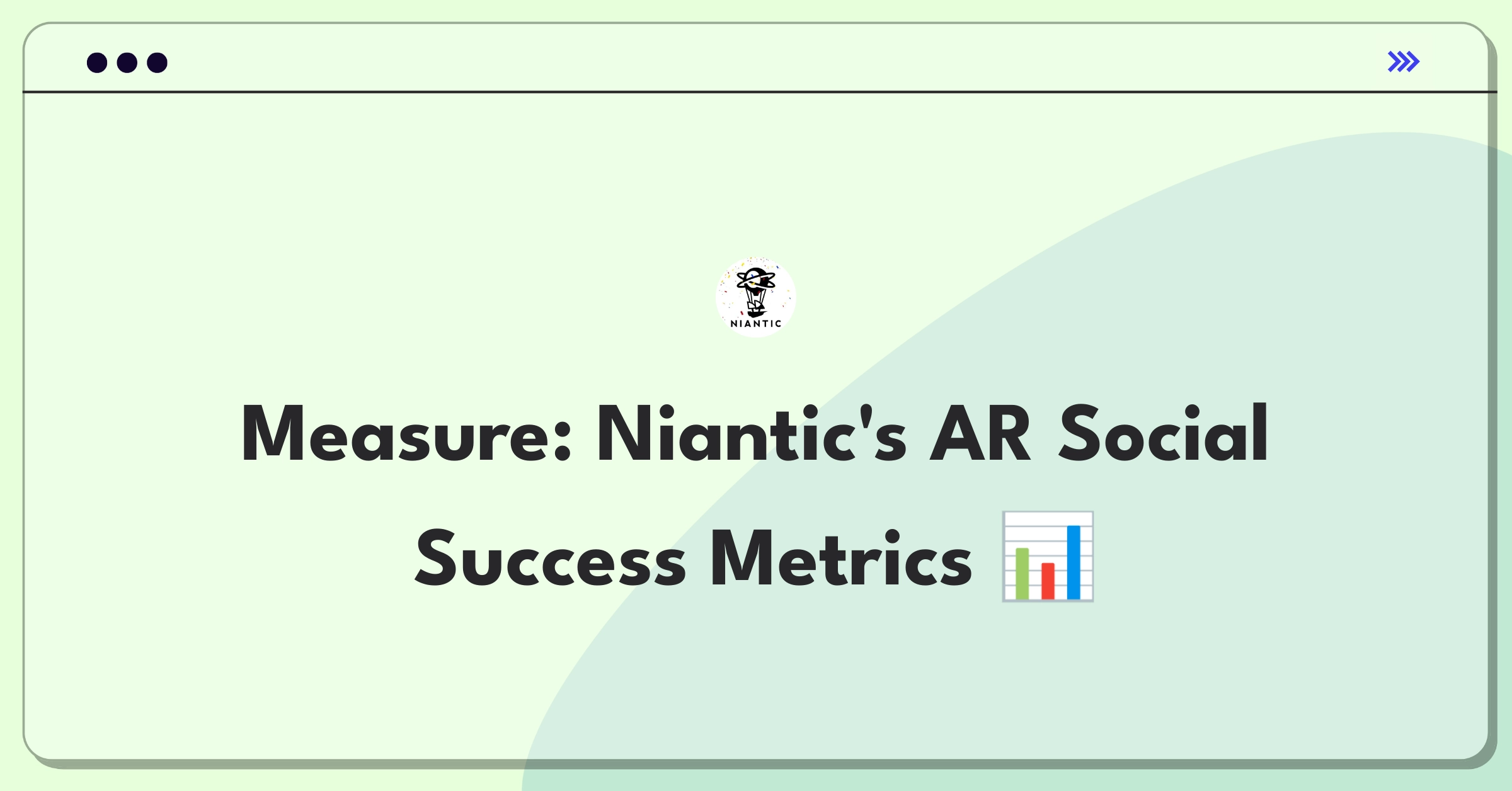Introduction
Defining the success of Niantic's real-world social feature requires a comprehensive approach that considers multiple stakeholders and metrics. To address this product success metrics challenge, I'll follow a structured framework covering core metrics, supporting indicators, and risk factors while considering all key stakeholders.
Framework Overview
I'll follow a simple success metrics framework covering product context, success metrics hierarchy.
Step 1
Product Context
Niantic's real-world social feature is designed to enhance the company's augmented reality (AR) games by encouraging players to interact in physical spaces. This feature likely includes elements such as:
- Local meetups and events
- Team-based activities in real-world locations
- Social networking tools tied to geographic locations
- Rewards for in-person interactions
Key stakeholders include:
- Players: Seeking engaging social experiences and game progression
- Niantic: Aiming to increase user engagement, retention, and monetization
- Local businesses: Potential partners for hosting events or promotions
- City officials: Concerned with public safety and space utilization
User flow:
- Players discover nearby social opportunities through the app
- They choose to participate in events or meetups
- Real-world interaction occurs, potentially involving game-related activities
- Post-event, players may receive in-game rewards or social connections
This feature aligns with Niantic's broader strategy of blending digital experiences with the physical world, differentiating them from purely virtual gaming competitors. Compared to traditional social media platforms, Niantic's approach uniquely emphasizes real-world connections.
Product Lifecycle Stage: This feature is likely in the growth stage, as Niantic continues to expand and refine its social offerings across its game portfolio.
Subscribe to access the full answer
Monthly Plan
The perfect plan for PMs who are in the final leg of their interview preparation
$99.00 /month
- Access to 8,000+ PM Questions
- 10 AI resume reviews credits
- Access to company guides
- Basic email support
- Access to community Q&A
Yearly Plan
The ultimate plan for aspiring PMs, SPMs and those preparing for big-tech
- Everything in monthly plan
- Priority queue for AI resume review
- Monthly/Weekly newsletters
- Access to premium features
- Priority response to requested question


.png)